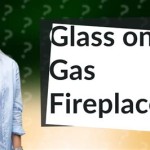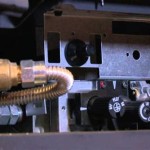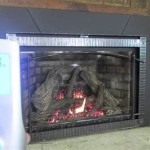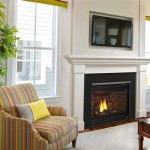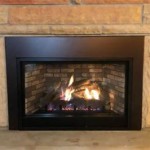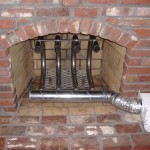Gas Fireplace Pilot Light Goes Out: Troubleshooting and Solutions
A gas fireplace offers a convenient and aesthetically pleasing way to heat a living space. However, one common issue homeowners face is the pilot light extinguishing. A pilot light is a small, continuous flame that ignites the main burner when heat is required. If the pilot light frequently goes out, the fireplace becomes unreliable and potentially unsafe. Understanding the reasons behind this issue and knowing how to address them is crucial for maintaining a functional and safe gas fireplace.
The extinguishing of a gas fireplace pilot light can stem from various factors, ranging from simple airflow disruptions to more complex issues within the gas supply system. A systematic approach to diagnosing the problem is essential before attempting any repairs. Tampering with gas lines without proper knowledge and experience can be hazardous and is strongly discouraged. Consulting a qualified technician is always the safest course of action when dealing with gas-related issues.
Understanding the Pilot Light Assembly
The pilot light assembly is a crucial component of a gas fireplace. It typically consists of a small burner, a thermocouple or thermopile, and a gas supply line. The pilot light flame heats the thermocouple, which generates a small electrical current. This current, in turn, holds open the gas valve, allowing gas to flow to the main burner when the thermostat calls for heat. If the pilot light extinguishes, the thermocouple cools, the electrical current stops, and the gas valve closes, preventing gas from leaking into the room. Understanding the function of each component is fundamental in identifying potential problems within the system.
The thermocouple is a safety device that ensures gas flows only when the pilot light is lit. If the thermocouple fails to generate sufficient voltage, the gas valve will close, even if the pilot light is burning. Over time, thermocouples can degrade and lose their effectiveness. Similarly, the thermopile, used in some models, generates a larger voltage used to operate the main gas valve and the fireplace blower. Like the thermocouple, a faulty thermopile can cause the pilot light to extinguish and prevent the fireplace from operating correctly.
The pilot light burner itself can become clogged with dust, debris, or carbon deposits, hindering the flow of gas and air. This can result in a weak or unstable flame that is easily extinguished. Regular cleaning of the pilot light orifice is essential for maintaining a consistent and reliable flame. A small brush or a specialized pilot light cleaning tool can be used to remove any obstructions.
Common Causes of Pilot Light Extinguishment
Several factors can contribute to a gas fireplace pilot light extinguishing. Identifying the root cause is essential for implementing the appropriate solution. These factors range from minor issues easily resolved by the homeowner to more significant problems that necessitate professional attention.
Drafts and Airflow Issues: External drafts or internal air currents can easily extinguish a pilot light, especially if it is already weak or unstable. Open windows or doors in close proximity to the fireplace can create drafts that disrupt the flame. Similarly, a malfunctioning or improperly adjusted fireplace damper can allow excessive airflow into the chimney, leading to the pilot light being blown out. Ensuring proper ventilation and minimizing drafts are crucial for maintaining a stable pilot light.
Gas Supply Problems: A disruption in the gas supply is a common cause of pilot light problems. This can be due to a variety of factors, including a closed gas valve, a kinked gas line, or a low gas pressure. Before attempting any repairs, it is important to verify that the gas supply valve is fully open and that the gas line is not obstructed. If other gas appliances in the house are also experiencing problems, it may indicate a more widespread issue with the gas supply that requires the attention of the gas company.
Dirty Pilot Light Orifice: The pilot light orifice is a small opening that controls the flow of gas to the pilot light burner. Over time, this orifice can become clogged with dust, debris, or carbon deposits. This obstruction restricts the flow of gas, resulting in a weak or unstable flame that is easily extinguished. Cleaning the pilot light orifice is a relatively simple task that can often resolve pilot light problems. However, it is important to exercise caution and follow the manufacturer's instructions to avoid damaging the orifice.
Faulty Thermocouple or Thermopile: As mentioned earlier, the thermocouple or thermopile is a safety device that ensures gas flows only when the pilot light is lit. If this component fails to generate sufficient voltage, the gas valve will close, even if the pilot light is burning. Thermocouples and thermopiles have a limited lifespan and can eventually fail due to wear and tear. Testing the thermocouple or thermopile with a multimeter can determine if it is functioning correctly. If it is faulty, it needs to be replaced. This is a task best left to a qualified technician.
Incorrect Gas Pressure: The gas pressure supplied to the fireplace must be within the manufacturer's specified range for the pilot light to function correctly. If the gas pressure is too low, the pilot light flame may be weak and unstable. If the gas pressure is too high, the flame may be too large and inefficient. Checking the gas pressure requires specialized equipment and should be performed by a qualified technician.
Troubleshooting Steps for Addressing Pilot Light Issues
When the pilot light goes out, a systematic troubleshooting process can help identify the cause and determine the appropriate solution. It is important to prioritize safety and to consult a qualified technician if unsure about any of the steps.
Visual Inspection: Begin by visually inspecting the entire fireplace assembly, including the pilot light burner, gas lines, and venting system. Look for any signs of damage, corrosion, or obstructions. Check the gas lines for kinks or leaks. Ensure that the venting system is clear of debris and that the damper is operating correctly. A thorough visual inspection can often reveal obvious problems that may be contributing to the pilot light extinguishing.
Cleaning the Pilot Light Assembly: If the visual inspection does not reveal any obvious problems, the next step is to clean the pilot light assembly. Turn off the gas supply to the fireplace and allow the pilot light to cool completely. Use a small brush or a specialized pilot light cleaning tool to remove any dust, debris, or carbon deposits from the pilot light orifice and burner. Reassemble the pilot light assembly and turn the gas supply back on. Relight the pilot light according to the manufacturer's instructions.
Checking for Drafts: Ensure that there are no drafts blowing on the pilot light. Close any nearby windows or doors and check the fireplace damper. If the damper is not closing properly, it may be necessary to repair or replace it. You can also try using a draft stopper or a screen to shield the pilot light from drafts.
Testing the Thermocouple/Thermopile: Use a multimeter to test the thermocouple or thermopile output. Refer to the fireplace manufacturer's specifications for the correct voltage range. If the output is below the specified range, the thermocouple or thermopile is likely faulty and needs to be replaced. This task requires caution and should be performed by someone with experience in electrical testing.
Professional Inspection: If the pilot light continues to extinguish after performing these troubleshooting steps, it is recommended to contact a qualified technician. A technician can perform a more thorough inspection of the fireplace and its gas supply system. They can also check the gas pressure and identify any other potential problems that may be contributing to the issue. Attempting to repair gas lines or other gas-related components without proper knowledge and experience can be hazardous and should be avoided.
In conclusion, a gas fireplace pilot light that frequently extinguishes can be a frustrating problem. By understanding the underlying causes and following a systematic troubleshooting process, homeowners can often resolve the issue themselves. However, it is crucial to prioritize safety and to consult a qualified technician when dealing with gas-related issues. Regular maintenance and cleaning can also help prevent pilot light problems and ensure the safe and efficient operation of the gas fireplace.

Why Does My Pilot Light Go Out We Love Fire

Should I Turn Off The Pilot Light In Spring B C Comfort Fireplace Hvac Repair Installation

How To Light The Pilot On A Gas Fireplace

Gas Fireplace Won T Stay Lit Magic Touch Mechanical

How To Relight A Millivolt Valve Gas Fireplace Pilot Light Tophat Pro
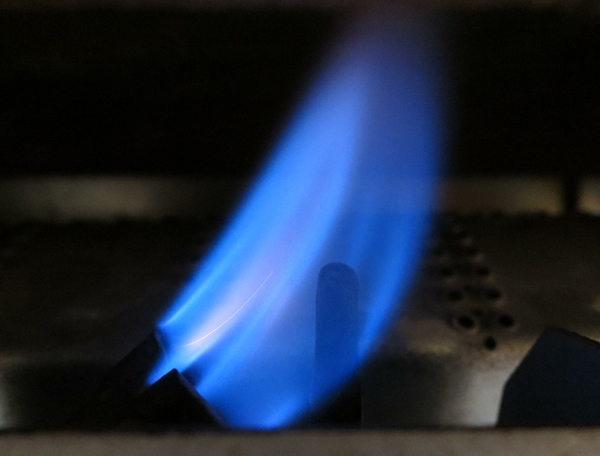
What Causes A Pilot Light To Go Out
Is It Okay If My Pilot Light Therma Coupler Red Hot When Having The On A Gas Fireplace Quora

How To Test If Your Pilot Flame Is Bad Www Mygasfireplacerepair Com

Gas Fireplace Pilot Lights Your Complete Guide Universe

Gas Fireplace Keeps Shutting Off Here S What You Can Do
Related Posts


